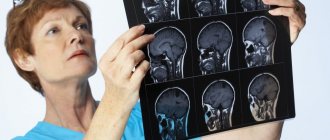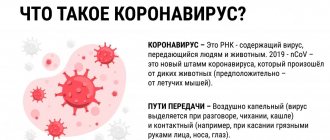Perhaps everyone will agree that it is unpleasant to note a decrease in intelligence and difficulty remembering information among loved ones and relatives. And even more so, wild horror grips parents when they realize that something is wrong with the child. What to do when such disturbances begin in the functioning of the brain? We are talking about cognitive impairment - the inability to perceive, assimilate information, and come up with ideas.
The main thing is not to panic. Timely treatment of cognitive impairment allows one to achieve excellent results and stable remission. Thanks to modern medicine, adequate therapy can cope with the disease.
Cognitive impairment in children: causes, signs and symptoms, diagnosis
The occurrence of cognitive impairment can be caused by such points in the anamnesis as:
- intrauterine hypoxia;
- hypoxia during childbirth;
- birth injuries;
- infectious diseases of the Central nervous system;
- lack of vitamins at an early age;
- brain injuries.
You should be very attentive to the development of your child’s cognitive functions if he has already been diagnosed with serious illnesses or has previously had a traumatic brain injury or an unexamined head injury.
Head injuries in children need to be approached very, very carefully, even if they seem minor at first glance. Such injuries in children are very common and account for up to 30–50% of all injuries. Every year their number increases by about 2%. In the total mass of head injuries, craniocerebral injuries are very common (up to 30% - 45% of cases). The consequences of a traumatic brain injury depend on its severity, timely assistance provided, and the age of the child.
Self-diagnosing the presence or predisposition to cognitive impairment can be done with great caution. Only a specialist can make a conclusion about the presence of violations.
Correction of cognitive impairment in children. Practical advice
Correction of cognitive impairment in children occurs through a set of measures. This is, first of all, drug treatment and psychological and pedagogical support. The child must be provided with a balanced diet and receive a full set of vitamins (especially group B) necessary for the development and functioning of the nervous system.
Drug treatment is prescribed by the doctor based on the results of the examination, examination and after collecting an anamnesis. The task of parents and teachers is to help the child with correction with the help of special classes.
So, what can and should be done at home with your child to level out cognitive impairment:
- Learn poetry, new foreign words, develop your memory.
- Develop emotional intelligence - play games to recognize emotions.
- Retell short texts and find the motives for the behavior of the main characters, find cause-and-effect relationships.
- Make up stories based on pictures.
- Find differences in identical pictures, incl. for speed.
- Count orally, carry out calculations of various kinds without the help of auxiliary aids.
- Play the word game backwards: read the words backwards. This game will lift your spirits and help cognitive development.
- Collect puzzles.
- Make up sequences (for example, collect beads according to a certain pattern, this is the development of both fine motor skills and logic of thinking).
- With small children, play games with pouring water, sorting peas/cereals/beans/buttons into different containers, finger games, etc.
Classification of the device
There are several degrees of this pathology, determined by IQ:
- mild (moronicity) – IQ 69–50. This form is characterized by slight developmental retardation, which allows a person to socialize in the surrounding society;
- moderate (not pronounced imbecility) – IQ 49–35. Such patients have basic communication skills, are able to understand gestures and respond to them, but it is difficult to understand them when they are worried;
- severe (severe imbecility) – IQ 34–20;
- deep (idiocy) - IQ less than 20. It is characterized by practically undeveloped speech, lack of instincts and primitive reactions. Among the additional manifestations you can notice the following: low or complete lack of coordination of movements, apathy, unjustified malice, anger, etc.
Moronicism is, in turn, divided into three more forms (depending on IQ):
- light – 69–65;
- moderate –64–60;
- heavy – 59–50.
Mental retardation, characterized by a decrease in intelligence, disorders of speech and motor development, and emotional and volitional spheres, is a very common disease. In the world, there are from 1 to 3% of people suffering from this disease. The fact that 75% of them have a mild form can “calm down.”
Quite often, this pathology is combined with other quite serious mental and somatic diseases: Down's disease, cerebral palsy, epilepsy, autistic disorders, blindness, deafness, etc.
UL cannot progress, but with a mild degree, timely educational measures and teaching methods can even increase intelligence.
Possible complications
Progressive MCI without timely effective therapy can develop into dementia, which leads to the loss of self-care skills and the ability to solve everyday problems. This gives rise to problems of socialization - the circle of contacts narrows, the ability to work is lost, and the desire to attend public events disappears. With a fluctuating course, patients have difficulty performing intense mental tasks, while correct correction of the daily routine and reduction of stress allows them to maintain their usual lifestyle.
Typical symptomatic picture
Symptoms are similar to those of cerebrospinal gravis:
If the cause of mild cognitive impairment is vascular disorders, then the onset is:
- Affective instability;
- Behavioral and emotional disorders;
- Increased anxiety;
- Fussiness and absent-mindedness.
Later, mnemonic symptoms are added. With degenerative lesions, memory problems, on the contrary, appear first.
Patients often complain of:
- Feeling of heaviness in the head;
- Headache;
- Drowsiness;
- Insomnia:
- Nausea;
- Lack of appetite;
- Dizziness;
- Intermittent sleep;
- Unsteadiness when walking.
The disturbances are not systemic; their intensity varies throughout the day, intensifying with mental and physical stress.
General information about the disease
Translated from Latin, “cognitive” means “familiarization, cognitive.” Consequently, mild cognitive disorder (MCI) is a slight deterioration of a whole complex of intellectual abilities: concentration, memory, reproduction and processing of information, the ability to abstract and solve logical problems. However, such a disorder does not reach the level of dementia, mental retardation or amnestic syndrome. Its development is provoked by an organic or infectious disease, and MCI can occur before, during or after the underlying disease. It most often occurs in people with a low level of education. Among the patients, about 10% are elderly people over 65 years of age; it is worth noting that the majority begin to develop a symptomatic picture characteristic of Alzheimer’s within a year.
Symptoms
These signs should be observed for a long time (at least six months):
- Unstable mood , rapid change of emotions (from tears to laughter in an instant), attacks of melancholy-angry mood (dysphoria), a tendency to an increased stupid and blissful mood (euphoria) without external reasons for this.
- Loss or decrease in the ability to foresee the consequences of one's actions. Incontinence of drives and needs.
- Difficulty learning.
- Decreased memory and attention.
- Thinking in detail (getting stuck on little things).
Incidence (per 100,000 people)
| Men | Women | |||||||||||||
| Age, years | 0-1 | 1-3 | 3-14 | 14-25 | 25-40 | 40-60 | 60 + | 0-1 | 1-3 | 3-14 | 14-25 | 25-40 | 40-60 | 60 + |
| Number of sick people | 10 | 100 | 215 | 210 | 210 | 256 | 214 | 10 | 100 | 205 | 188 | 188 | 210 | 214 |
results
The average age in the group of children with chronic tics was 6.8±0.8 years. In this group there were 43 (86.0%) boys and 7 (14.0%) girls.
The average age in the group of children with transient tics was 7.2±0.9 years. The number of boys in this group was 23 (76.7%), and girls - 7 (23.3%).
The most common hyperkinesis was blinking, it was observed in 36 (72.0%) children, eyebrow raising - in 12 (24.0%), forehead frowning - in 10 (20.7%). In 31 (62.0%) cases, the patient had several tics at once.
The average frequency of tics in the group of children with transient tics was 3.4±1.5 points, in the group of children with chronic tics - 3.5±1.3 points. Thus, there were no significant differences in the frequency of hyperkinesis in the study groups ( p
>0,05).
33 (66.0%) children with chronic tics and 8 (26.7%) children with transient tics had complaints of fatigue, general weakness, exhaustion, lethargy, and daytime sleepiness. It should be noted that the corresponding complaints arose during the school day and did not go away after rest. In the group of patients with transient tics, the average asthenia indicators were close to normal. The greatest severity of asthenia was noted in the subscales “general asthenia” and “mental asthenia” in the group of patients with chronic tics.
There were no significant differences between short-term memory indicators in the study groups. Indicators of long-term memory in children with chronic tics were significantly lower than in the control group and the group of children with transient tics (Table 1).
Table 1. Clinical and psychological indicators in the study groups Note. * — p<0.05 — significance of differences compared with the corresponding indicator in the control group; # — p<0.05 — significant differences compared to the group of children with transient tics.
The results of the TOVA test showed that children with tics had significantly reduced indicators of attention (omissions of reactions), more pronounced in the second half of the test. At the same time, in children with chronic tics the level of inattention was significantly higher. In addition, children with tics had a higher level of false alarms (erroneous button presses), associated with impulsivity, compared to children from the control group, while the observed changes increased significantly in the second half of the test. It should be noted that the second indicator turned out to be significantly higher in children with transient tics (Fig. 1).
Rice. 1. TOVA test scores in children with transient and chronic tics before treatment.
Analysis of EEG of patients in the study groups (Fig. 2)
Rice.
2. EEG power spectra in children with transient and chronic tics before treatment. showed that in the group with transient tics, the power of the theta range in the occipital-parietal leads of both hemispheres is statistically significantly greater ( p
<0.05) both compared to healthy children and compared to children with chronic tics (
p
<0.05). 05). Many children in this group at 6-7 years of age show subdominance of theta activity in the occipital leads of both hemispheres, while in children with chronic tics there are single (less often group) theta waves.
When analyzing the alpha range in the occipital leads in children with chronic tics, a statistically significant ( p
<0.05) decrease in power compared to healthy children (see Fig. 2). One can also note a higher amplitude of the alpha rhythm in the posterior parts of both hemispheres compared to healthy children and children with transient tics. The majority of subjects in this group recorded higher values of the peak frequency of the alpha rhythm (9-10 counts/s) compared to the indicators of the group of children with transient tics (7-7.5 counts/s).
Children with transient tics showed a statistically significant decrease in alpha band power compared to healthy children and children with chronic tics ( p
<0.05) (see Fig. 2). In most children, the amplitude of the alpha rhythm is not increased compared to healthy children.
In the frontotemporal leads of both hemispheres in children with chronic tics, a statistically significant ( p
<0.05) increase in alpha range power compared to healthy children. Many have noted a tendency for alpha activity to spread to the anterior parts of the cerebral cortex and episodes of rhythm synchronization in the alpha range.
In subgroup 1, after treatment, chronic tics decreased in 12 (60.0%) patients. The average frequency of tics on a 5-point TSGS scale after the course was 2.7±1.5 points (with a maximum frequency of 5 points), which indicates a significant improvement ( p
<0.05) (Table 2).
Table 2. Average clinical and psychological indicators in subgroups before and after treatment Note.
# — p<0.05 — significance of differences compared with the corresponding indicator before treatment; ## — p<0.01 — significance of differences compared with the corresponding indicator before treatment; * - p<0.05 - significance of differences compared with the corresponding indicator in group 1. After the course of treatment, asthenic symptoms decreased. No significant changes in memory indicators were recorded (see Table 2). A repeated study using the TOVA test after treatment revealed a statistically significant decrease in inattention and false alarms in the second half of the test (Fig. 3).
Rice. 3. TOVA test scores after treatment in subgroups of children with chronic tics.
According to the EEG analysis, after treatment in subgroup 1, the power of alpha waves in the occipital leads of both hemispheres statistically significantly increased compared to the indicators before treatment ( p
<0.05) (Fig. 4).
Rice.
4. EEG power spectra after treatment in subgroups of children with chronic tics. One can also note in many patients a decrease in amplitude in the occipital leads, a decrease in the representation of alpha and theta waves in the anterior parts of the cerebral cortex (see Fig. 4). Tolerability of therapy can be described as good. A side effect in the form of transient daytime sleepiness was noted in 2 children; in another case, parents noted an increase in physical activity. These undesirable symptoms appeared at the beginning of the course and disappeared after 2 weeks during treatment. It should be noted that these phenomena did not lead to interruption of therapy. No other side effects were identified.
In subgroup 2, after completion of treatment L.P. Phenibut in combination with L.P. Cortexin, a decrease in chronic tics was noted in 25 (83.3%) patients suffering from this disorder. The average frequency of tics on the TSGS scale after the course was 2.0±1.4 points (with a maximum frequency of 5 points), which indicates a significant improvement ( p
<0.01). In addition, a pronounced decrease in asthenic symptoms should be noted (see Table 2).
The results of a repeated psychological study showed a pronounced improvement in memory indicators: after the course of treatment, the volume of words and the strength of mnestic traces when testing auditory verbal memory significantly increased (see Table 2).
A repeated psychophysiological study (TOVA test) after the course of treatment in subgroup 2 revealed a pronounced decrease in inattention and false alarms, especially in the second half of the test, both compared to the indicators before treatment and compared to the indicators of subgroup 1 (see Fig. 13).
When analyzing the EEG data of patients in subgroup 2 after the course of treatment, we also saw a statistically significant ( p
<0.05) increase in the power of alpha range waves in the occipital leads of both hemispheres with a significant decrease in power in the frontotemporal regions (
p
<0.05).
In the frontotemporal regions of the cerebral cortex, a statistically significant decrease in power was noted both in comparison with the indicators before treatment ( p
<0.05), and when comparing the power of this range with the indicators of subgroup 1 (Fig. 4). In addition, one can note an increase in the gradient between the frontal and occipital regions of both hemispheres. Upon visual assessment, the following positive changes were noted: a decrease in the amplitude of the background EEG, a decrease in episodes of rhythm synchronization in the alpha range, a decrease in pointed waves and polyphasic potentials in the occipital leads.
Tolerability of therapy can be described as good. In 2 cases, an increase in motor activity was recorded. These undesirable symptoms appeared at the beginning of the course and disappeared after 2 weeks during treatment. It should be noted that these manifestations did not lead to interruption of therapy. No other side effects were identified.
Diagnostic methods
To make a diagnosis, consultation with a psychiatrist, neurologist, or clinical psychologist is required. In this case, criteria are applied taking into account the emphasis on the state of the cognitive sphere and memory. It is necessary to distinguish between mild cognitive impairment and mental retardation, dementia and psychoorganic syndrome. For this use:
- Psychological testing, this may include pathopsychological or neuropsychological examination. There is a mild degree of impairment of short-term memory, slight instability of attention, fluctuations in dynamic mental activity. Possibly, but not necessarily, a decrease in abstract-logical function. The result is determined taking into account the patient’s level of education, age, and field of activity;
- A conversation with a psychiatrist and neurologist allows you to establish an anamnesis and identify symptoms. Characteristic complaints include general confusion, increased fatigue, difficulty concentrating and remembering. Patients working in the mental sphere note difficulty in formulating logical conclusions and abstract ideas;
- A physical examination by a neurologist is intended to establish the causes and differentiate diseases from other pathologies. Small but persistent neurological disorders may be observed: discoordination phenomena, anisoreflexia, symptoms of oral automatism and oculomotor failure. In this case, no clear syndromes can be traced.
Signs of mild UO
Mental underdevelopment with decreased intelligence, congenital or acquired, can be noticed in very young children, three years old. However, the diagnosis is made no earlier than the child reaches seven years of age.
Signs of mental retardation in newborns are almost impossible to detect, especially its mild form. But then this will manifest itself in developmental delays and difficulties in adapting to kindergarten. It is difficult for a child to communicate with peers, find a common language with them, maintain a daily routine, master new skills, and absorb knowledge. He cannot sit in one place, gets tired quickly, does not show any desire to understand the world, and is inattentive.
A child may have a similar but passing problem - mental retardation. The difference is that a child with mental retardation is not always able to learn a new skill, while a child with mental retardation still learns it after several repetitions.
This is why it is so important to detect the symptoms of MR early in order to begin corrective measures immediately. Here they are:
- Abnormal motor development. The baby begins to hold his head up late, tries to sit up, stand up, and walk. His grasping reflex is impaired, he is unable to hold a toy, and a little later, a spoon.
- The processes of excitation and inhibition are unbalanced - the baby is overly impulsive, irritable, or excessively lethargic and slow.
- Belated babble. He begins to speak with a significant delay or there is no speech at all. The child is not able to speak coherently, as it is difficult for him to construct a sentence. He does not understand what is being said to him, so he cannot fulfill even basic requests.
- Poor emotional-volitional sphere, self-isolation, lack of interest in what is happening around.
- There is no interest in toys, their incorrect use prevails, preference is given to primitive games.
- There is no abstract thinking, that is, logic, mathematical and creative abilities.
A few words should be said about emotions: the child experiences grief and joy, hostility and sympathy, is sad and happy, but all this is expressed very weakly, not in many ways.
Outwardly, such a child is no different from his peers. But his inability to concentrate properly leads to learning difficulties.
Children with a mild degree of ID are afraid of a change of environment and are highly dependent on their parents and educators. Difficulties in recognizing emotions create problems with communication, so kids withdraw into themselves. But it is also possible that they draw attention to their person in different ways, often very awkward.
Such individuals are well aware that they are different from healthy people, so they take measures to conceal their problem. Many people manage to gain self-care skills, although this happens more slowly than their peers. The school period is especially difficult for them, since writing, reading and mathematics are difficult for them.










